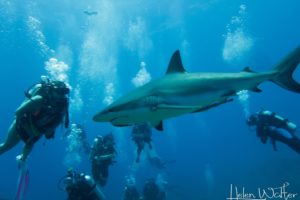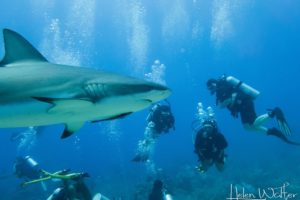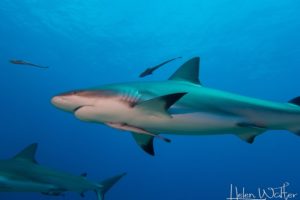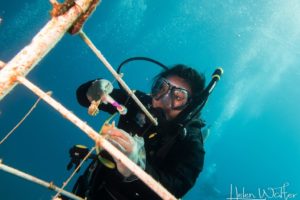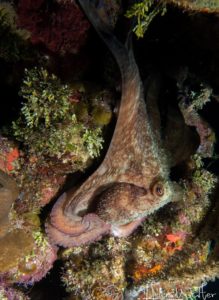Thursday – Sharks, Corals, and the Dark, Oh My!
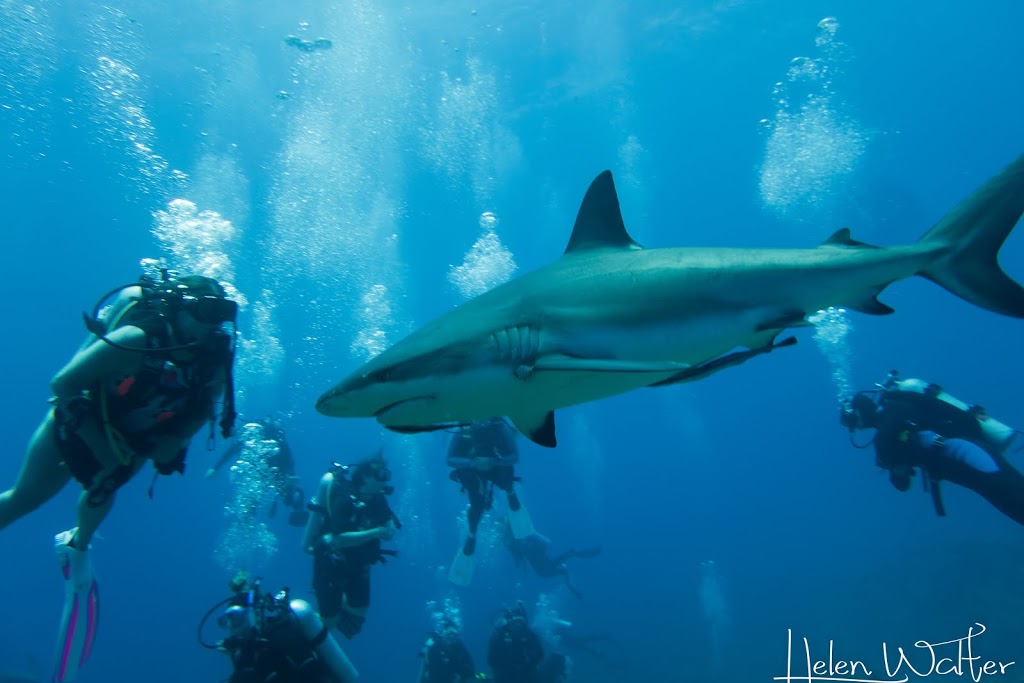
After breakfast most of us headed down to the dock to get on board on boat and travel around the island once more to go on a dedicated shark dive. Sergio, a Divemaster from Italy, introduced us to some shark physiology and behavior as well as making sure we understood some of the extra safety procedures we would be following.
On arriving at the dive site Sergio jumped first into the water, followed quickly by myself and everyone else. We swam along the surface line, then descended in a group down the mooring line. Once there we’d been instructed to sit in the sand in a set position and wait for the next signal. Took us a little to get settled but very soon after we were given the signal to swim around with the sharks. Sharks are not interested in humans. Our blood does not smell like prey to them, but they were particularly interested in the bucket of fish food Sergio was carrying around. This allowed the students to observe a large number of, mostly female, sharks in one area.
We were then directed to return to our seated positions in the sand before Sergio let them have the fish food bucket. I’ve been on many shark dives, a lot of which are not regularly scheduled,so those sharks tend to be hungry. These ones you could tell they were interested in a free meal but at the same time they didn’t give off the aggressive behavior I’ve previously noted. Which was a good thing with all my students in the water. Still, it didn’t take them long to finish off the food, and then it was time to safely ascend the line.
Returning to our home-away-from-home we had lunch, then accompanied Jennifer on a dive to the coral nursery. Students were handed either a scrub brush or a toothbrush, and asked to clean the algae off growing on the coral tree. This algae, if it grows too thick, can disrupt the amount of sunlight that the coral gets, and needs, to grow. I swam around and took photos of the students, which allowed me to observe their buoyancy – it improves everyday!
Later that afternoon, we were lucky to have the author of our textbook teach us about nocturnal adaptations. Mickey has lived on the island a number of years and has been doing some amazing work cataloging all the marine species on Roatan. A number of students got their books signed too!! We learnt that some species hibernate on the reef at night, others come out and are observable. Some of them change color, which further complicates identification! Mickey showed us that corals will extend their tentacles at night so they can feed. He also shared the experience of UV night diving, which I think really fascinated some of our students!
After our talk we headed to the dock to do a night dive. Each student was given a dive light and instructed on how to best use it. Also they were given instructions about how to later observe bio luminescence underwater. Unfortunately I only joined them for a short time as my camera flooded and I had to make it back to the boat as quickly as I could. Luckily it seems to be working just fine, but there was quite a lot of water in there 🙁 However, we did all see an octopus who was out hunting.
The students enjoyed it to differing degrees but everyone really seemed to like the bio luminescence. Getting back to the boat was a little tricky as the wind had picked up and it was rocking a little. We made it back safely and still had time for dinner.
Some of our students did some of their research project..
and then I think we pretty much all fell into bed!
